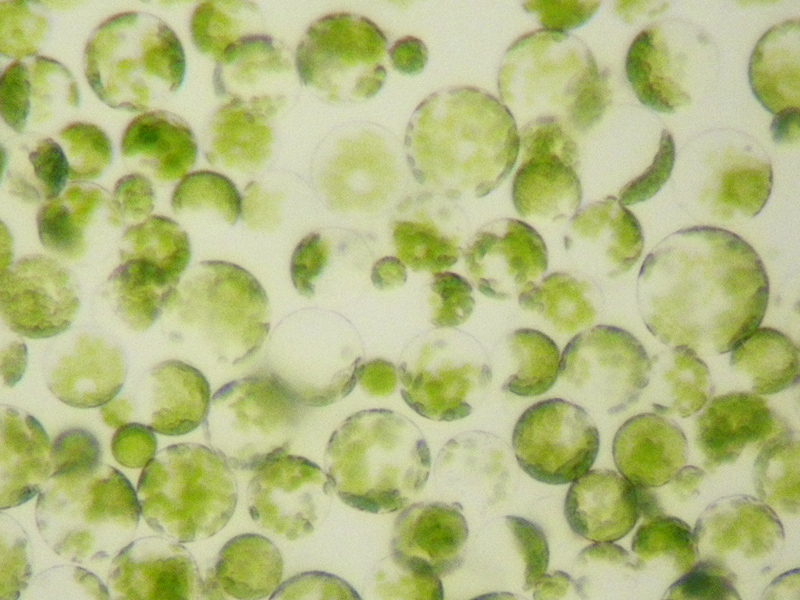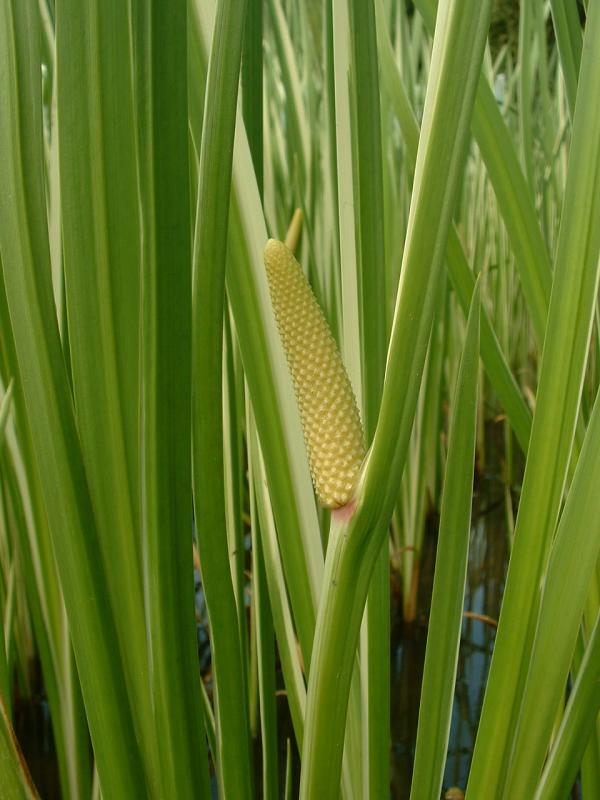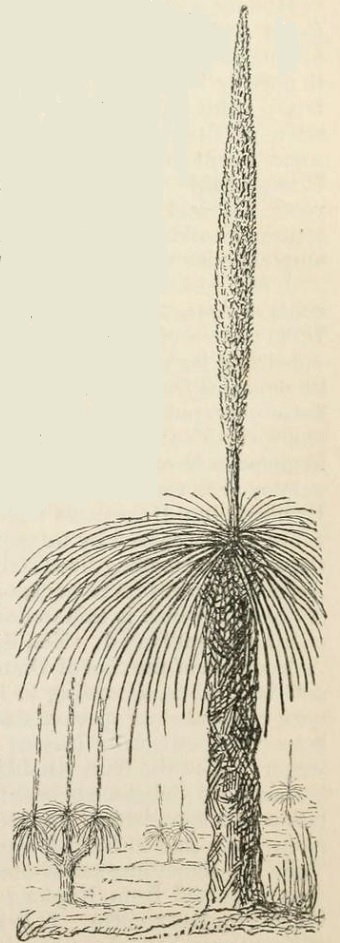|
Tapetum (botany)
The tapetum is a specialised layer of nutritive cells found within the anther, of flowering plants, where it is located between the sporangenous tissue and the anther wall. Tapetum is important for the nutrition and development of pollen grains, as well as a source of precursors for the pollen coat.P.L. Polowick, V.K. Sawhney 1993Differentiation of the Tapetum During Microsporogenesis in Tomato (Lycopersicon esculentum Mill.), with Special Reference to the Tapetal Cell Wall Annals of Botany, Volume 72, Issue 6, December 1993, Pages 595–605 The cells are usually bigger and normally have more than one nucleus per cell. As the sporogenous cells undergo mitosis, the nuclei of tapetal cells also divide. Sometimes, this mitosis is not normal due to which many cells of mature tapetum become multinucleate. Sometimes polyploidy and polyteny can also be seen. The unusually large nuclear constitution of the tapetum helps it in providing nutrients and regulatory molecules to the forming po ... [...More Info...] [...Related Items...] OR: [Wikipedia] [Google] [Baidu] |
Multinucleate
Multinucleate cells (also known as multinucleated or polynuclear cells) are eukaryotic cells that have more than one nucleus per cell, i.e., multiple nuclei share one common cytoplasm. Mitosis in multinucleate cells can occur either in a coordinated, synchronous manner where all nuclei divide simultaneously or asynchronously where individual nuclei divide independently in time and space. Certain organisms may have a multinuclear stage of their life cycle. For example, slime molds have a vegetative, multinucleate life stage called a plasmodium. Although not normally viewed as a case of multinucleation, plant cells share a common cytoplasm by plasmodesmata, and most cells in animal tissues are in communication with their neighbors via gap junctions. Multinucleate cells, depending on the mechanism by which they are formed, can be divided into "syncytia" (formed by cell fusion) or "coenocytes" (formed by nuclear division not being followed by cytokinesis). A number of dinoflagellat ... [...More Info...] [...Related Items...] OR: [Wikipedia] [Google] [Baidu] |
Callase
Glucan endo-1,3-beta-D-glucosidase (, ''endo-1,3-beta-glucanase'', ''laminarinase'', ''laminaranase'', ''oligo-1,3-glucosidase'', ''callase'', ''beta-1,3-glucanase'', ''Kitalase'' (trademark), ''1,3-beta-D-glucan 3-glucanohydrolase'', ''endo-(1,3)-beta-D-glucanase'', ''(1->3)-beta-glucan 3-glucanohydrolase'', ''endo-1,3-beta-D-glucanase'', ''endo-1,3-beta-glucosidase'', ''1,3-beta-D-glucan glucanohydrolase'') is an enzyme with systematic name ''3-beta-D-glucan glucanohydrolase''. This enzyme catalyses the following chemical reaction : Hydrolysis Hydrolysis (; ) is any chemical reaction in which a molecule of water breaks one or more chemical bonds. The term is used broadly for substitution reaction, substitution, elimination reaction, elimination, and solvation reactions in which water ... of (1->3)-beta-D-glucosidic linkages in (1->3)-beta-D-glucans This enzyme is marginally active on mixed-link (1->3,1->4)-beta-D-glucans. References External links * {{Portal bar, ... [...More Info...] [...Related Items...] OR: [Wikipedia] [Google] [Baidu] |
Locule
A locule (plural locules) or loculus (plural loculi) (meaning "little place" in Latin) is a small cavity or compartment within an organ or part of an organism (animal, plant, or fungus). In angiosperms (flowering plants), the term ''locule'' usually refers to a chamber within an Ovary (plants), ovary (gynoecium or carpel) of the flower and fruits. Depending on the number of locules in the ovary, fruits can be classified as ''uni-locular'' (unilocular), ''bi-locular'', ''tri-locular'' or ''multi-locular''. The number of locules present in a gynoecium may be equal to or less than the number of carpels. The locules contain the ovules or seeds. The term may also refer to chambers within anthers containing pollen. In Ascomycete fungi, locules are chambers within the hymenium in which the perithecium, perithecia develop. References Plant anatomy Plant morphology Fungal morphology and anatomy {{botany-stub ... [...More Info...] [...Related Items...] OR: [Wikipedia] [Google] [Baidu] |
Protoplasts
Protoplast (), is a biology, biological term coined by Johannes von Hanstein, Hanstein in 1880 to refer to the entire cell, excluding the cell wall. Protoplasts can be generated by stripping the cell wall from plant, bacterium, bacterial, or fungus, fungal cells by mechanical, chemical or enzymatic means. Protoplasts differ from spheroplasts in that their cell wall has been completely removed. Spheroplasts retain part of their cell wall. In the case of Gram-negative bacterial spheroplasts, for example, the peptidoglycan component of the cell wall has been removed but the bacterial outer membrane, outer membrane component has not. Enzymes for the preparation of protoplasts Cell walls are made of a variety of polysaccharides. Protoplasts can be made by degrading cell walls with a mixture of the appropriate polysaccharide-degrading enzymes: During and subsequent to digestion of the cell wall, the protoplast becomes very sensitive to osmosis, osmotic stress. This means cell wall ... [...More Info...] [...Related Items...] OR: [Wikipedia] [Google] [Baidu] |
Canna (plant)
''Canna'' or canna lily is the only genus of flowering plants in the family Cannaceae, consisting of 10 species.The Cannaceae of the World, H. Maas-van der Kamer & P.J.M. Maas, BLUMEA 53: 247-318 Cannas are not true lilies, but have been assigned by the APG II system of 2003 to the order Zingiberales in the monocot clade Commelinids, together with their closest relatives, the gingers, spiral gingers, bananas, arrowroots, heliconias, and birds of paradise. The plants have large foliage, so horticulturists have developed selected forms as large-flowered garden plants. Cannas are also used in agriculture as a source of starch for human and animal consumption. Khoshoo, T.N. & Guha, I. - Origin and Evolution of Cultivated Cannas. Vikas Publishing House Although plants of the tropics, most cultivars have been developed in temperate climates and are easy to grow in most countries of the world, as long as they receive at least 6–8 hours average sunlight during the summer, and ar ... [...More Info...] [...Related Items...] OR: [Wikipedia] [Google] [Baidu] |
Monocots
Monocotyledons (), commonly referred to as monocots, (Lilianae ''sensu'' Chase & Reveal) are grass and grass-like flowering plants (angiosperms), the seeds of which typically contain only one embryonic leaf, or cotyledon. They constitute one of the major groups into which the flowering plants have traditionally been divided; the rest of the flowering plants have two cotyledons and are classified as dicotyledons, or dicots. Monocotyledons have almost always been recognized as a group, but with various taxonomic ranks and under several different names. The APG III system of 2009 recognises a clade called "monocots" but does not assign it to a taxonomic rank. The monocotyledons include about 60,000 species, about a quarter of all angiosperms. The largest family in this group (and in the flowering plants as a whole) by number of species are the orchids (family Orchidaceae), with more than 20,000 species. About half as many species belong to the true grasses (Poaceae), which are ec ... [...More Info...] [...Related Items...] OR: [Wikipedia] [Google] [Baidu] |
Acorales
''Acorus'' is a genus of monocot flowering plants. This genus was once placed within the family Araceae (aroids), but more recent classifications place it in its own family Acoraceae and order Acorales, of which it is the sole genus of the oldest surviving line of monocots. Some older studies indicated that it was placed in a lineage (the order Alismatales), that also includes aroids (Araceae), Tofieldiaceae, and several families of aquatic monocots (e.g., Alismataceae, Posidoniaceae). However, modern phylogenetic studies demonstrate that ''Acorus'' is sister to all other monocots. Common names include calamus and sweet flag. The genus is native to North America and northern and eastern Asia, and naturalised in southern Asia and Europe from ancient cultivation. The known wild populations are diploid except for some tetraploids in eastern Asia, while the cultivated plants are sterile triploids, probably of hybrid origin between the diploid and tetraploid forms. Characteristics ... [...More Info...] [...Related Items...] OR: [Wikipedia] [Google] [Baidu] |
Clade
A clade (), also known as a monophyletic group or natural group, is a group of organisms that are monophyletic – that is, composed of a common ancestor and all its lineal descendants – on a phylogenetic tree. Rather than the English term, the equivalent Latin term ''cladus'' (plural ''cladi'') is often used in taxonomical literature. The common ancestor may be an individual, a population, or a species (extinct or extant). Clades are nested, one in another, as each branch in turn splits into smaller branches. These splits reflect evolutionary history as populations diverged and evolved independently. Clades are termed monophyletic (Greek: "one clan") groups. Over the last few decades, the cladistic approach has revolutionized biological classification and revealed surprising evolutionary relationships among organisms. Increasingly, taxonomists try to avoid naming taxa that are not clades; that is, taxa that are not monophyletic. Some of the relationships between organisms ... [...More Info...] [...Related Items...] OR: [Wikipedia] [Google] [Baidu] |
Alismatales
The Alismatales (alismatids) are an order of flowering plants including about 4,500 species. Plants assigned to this order are mostly tropical or aquatic. Some grow in fresh water, some in marine habitats. Description The Alismatales comprise herbaceous flowering plants of often aquatic and marshy habitats, and the only monocots known to have green embryos other than the Amaryllidaceae. They also include the only marine angiosperms growing completely submerged, the seagrasses. The flowers are usually arranged in inflorescences, and the mature seeds lack endosperm. Both marine and freshwater forms include those with staminate flowers that detach from the parent plant and float to the surface. There they can pollinate carpellate flowers floating on the surface via long pedicels. In others, pollination occurs underwater, where pollen may form elongated strands, increasing chance of success. Most aquatic species have a totally submerged juvenile phase, and flowers are either ... [...More Info...] [...Related Items...] OR: [Wikipedia] [Google] [Baidu] |
Lilioid Monocots
Lilioid monocots (lilioids, liliid monocots, petaloid monocots, petaloid lilioid monocots) is an informal name used for a grade (grouping of taxa with common characteristics) of five monocot orders (Petrosaviales, Dioscoreales, Pandanales, Liliales and Asparagales) in which the majority of species have flowers with relatively large, coloured tepals. This characteristic is similar to that found in lilies ("lily-like"). Petaloid monocots refers to the flowers having tepals which all resemble petals (petaloid). The taxonomic terms Lilianae or Liliiflorae have also been applied to this assemblage at various times. From the early nineteenth century many of the species in this group of plants were put into a very broadly defined family, Liliaceae ''sensu lato'' or ''s.l.'' (lily family). These classification systems are still found in many books and other sources. Within the monocots the Liliaceae ''s.l.'' were distinguished from the Glumaceae. The development of molecular phyloge ... [...More Info...] [...Related Items...] OR: [Wikipedia] [Google] [Baidu] |


_--_Canna.jpg)


